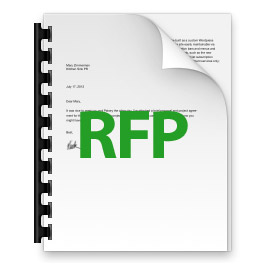
Food for Thought: De Blasio’s Long-term Approval
This week’s Food for Thought feature is an article authored by reporter Brendan Cheney of The Capital.
Bill de Blasio has been mayor of New York City for one year, which means it’s probably too soon—for the mayor, anyway—to be thinking in any serious way about 2017. A political science paper from 2012 says de Blasio only needs to worry about two things, both of which are in large part out of his control: crime and the economy. In their 2012 American Journal of Political Science paper called “Holding Mayors Accountable: New York’s Executives from Koch to Bloomberg,” R. Douglas Arnold and Nicholas Carnes looked at factors correlated with mayoral approval ratings. The authors bill the paper as “The first systematic study of how citizens’ evaluations of mayors respond over time to changes in local conditions.” They hypothesized that a strong economy, decreased crime, and an expansion of government services would increase mayoral approval, and changes in the other direction would lead to decreased approval ratings.
They found that only changes in the economy and crime were related, with a two-month delay, to mayoral approval ratings. The authors used the change in an economic misery index, which combines inflation in the metropolitan area and unemployment in New York City, to measure the strength of the economy. And the authors used the number of homicides in New York City as a measure of crime. The authors found that an increase of 20 homicides reduced mayoral approval by almost one half of a percentage point. “Although most month-to-month swings in crime were modest, successive months of increasing homicides could seriously damage a mayor’s standing with the public, said Arnold and Carnes.” And an increase of one percentage point in the economic misery index led to a half of a point decrease in the mayor’s approval. This change was very close to being statistically significant.
The change in city services, as measured by the size of the city workforce, was not correlated with mayoral approval changes. The authors also found that the mayor’s approval rating increases during a re-election campaign. “Whatever the source, the cumulative results over a five-month campaign amount to a nearly 7-point boost in approval,” reads the report.
The report also looked racial divisions. They found that different mayors started with different approval ratings by race. “From day one, blacks were less enthusiastic about Koch and Giuliani than were whites, and whites were less enthusiastic about Dinkins than were blacks,” they wrote. As you can see in the chart at the bottom of this article, Bill de Blasio’s approval is similar to Dinkins, where his approval is higher among black residents than white residents. But the authors added, “Even when racial divisions existed, however, white and black New Yorkers responded similarly to changes in local conditions.” The authors also looked at the relationship between approval ratings and vote share, because mayors are elected by votes and not approval ratings. They found that a 10 point decrease in approval is related to a 6.2 point drop in vote share. This is not statistically significant, though the authors say it is close to statistical significance for only seven observations. “Every incumbent New York mayor who had an approval rating of at least 50 percent won re-election.” And every mayor with a majority of New Yorkers opposing them lost.
Both Ed Koch in 1989 and David Dinkins in 1993, who lost reelection (Koch in a primary and Dinkins in the general election), faced increasing economic misery and increasing homicides. When Rudolph Giuliani and Michael Bloomberg were running for reelection, they benefitted from decreasing economic misery and decreasing homicides. So whether it is Bill de Blasio looking in his rearview mirror, or potential challengers sizing up the mayor’s vulnerability, they should look at the change in these two measures between now and 2017. And they should keep in mind the bump he is likely to get while campaigning.If the measures are flat or declining, then de Blasio should be tough to beat. If the measures are increasing, then he might be vulnerable. Right now, the numbers look good for de Blasio. Economic misery is declining as unemployment is decreasing and inflation is low and remaining so. And homicides continue to decrease. Homicides are down 4 percent from the same time last year.
NYPD data only compares this week to the same week last year. The better analysis would be to compare monthly or quarterly data starting in January 2014. NYPD has not made quarterly data available to Capital. We’ll see if recent events will affect what has been a general pattern going back to Koch. In the most recent poll, de Blasio’s approval is little changed at 47 percent approval in a Quinnipiac poll on 12/18 and just before that a 52 percent approval on a 12/12 poll by Siena. If de Blasio does lose in 2017, there will be a silver lining for him: According to the research, he would get a bump in his approval rating on his way out. “Whatever the cause, incumbents enjoy an 11-point boost in their approval in the two months after voters send them packing,” the authors wrote. And if he has designs on a third term, he should keep this in mind: “As with presidents and governors, the longer mayors serve, the less citizens approve of their performance.”


